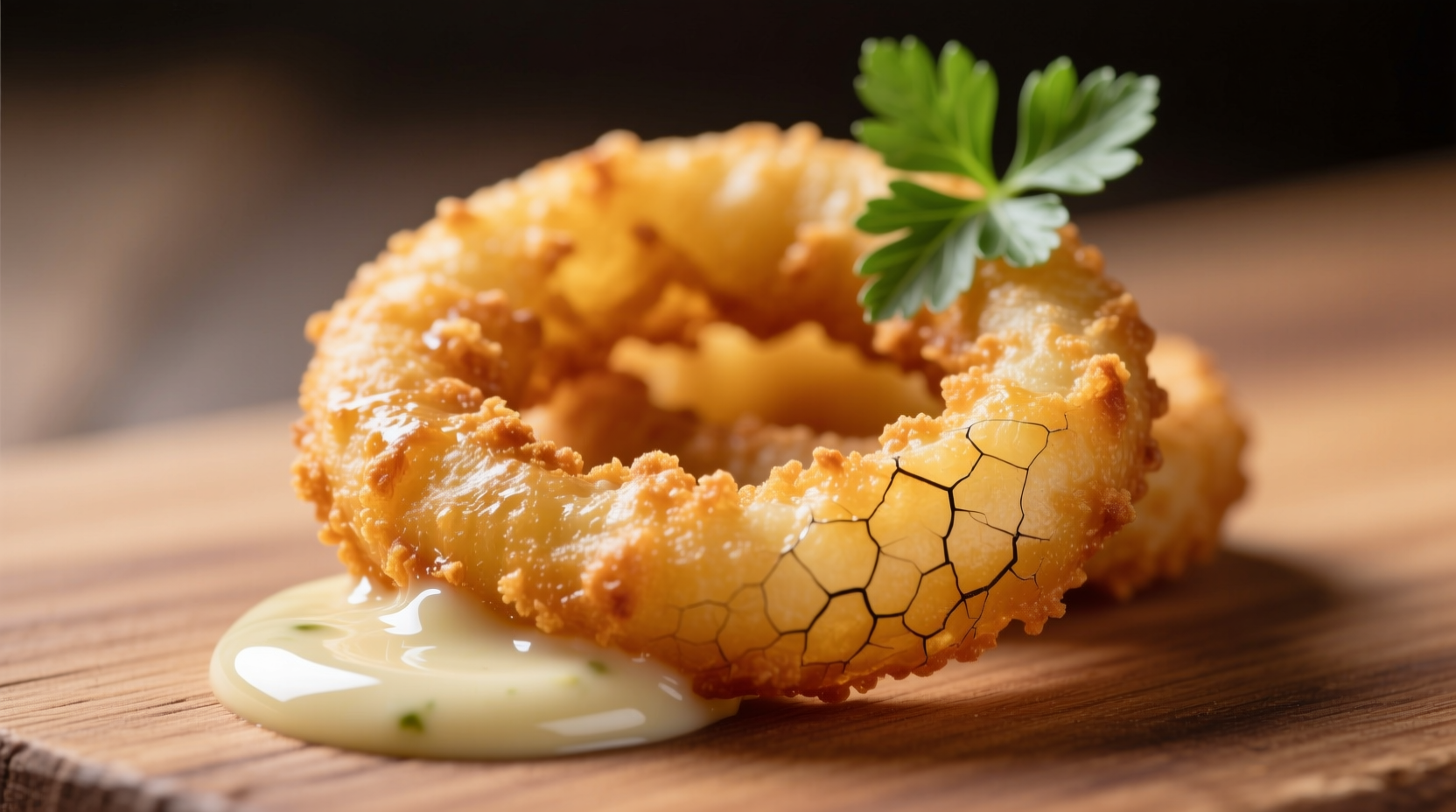Discover the science-backed techniques professional chefs use to create perfectly crunchy, golden-brown crispy onions every time. This comprehensive guide reveals the exact temperature ranges, onion varieties, and preparation methods that transform ordinary onions into extraordinary culinary accents that elevate soups, salads, and main dishes with minimal effort.
The Essential Science Behind Perfect Crispy Onions
Understanding the Maillard reaction and caramelization processes explains why certain techniques yield superior results. When onions hit hot oil, moisture rapidly evaporates while natural sugars caramelize and proteins undergo the Maillard reaction, creating complex flavors and that signature golden color. USDA food safety guidelines recommend maintaining oil temperatures between 325-350°F (163-177°C) to ensure proper cooking without excessive oil absorption.
| Onion Variety | Sugar Content | Best For Crispy Application | Flavor Profile |
|---|---|---|---|
| Yellow Onions | 4.2-4.8% | Classic crispy garnish | Rich, balanced sweetness |
| Red Onions | 3.9-4.5% | Colorful salads and garnishes | Sharper, slightly bitter |
| Shallots | 7.1-8.3% | Premium finishing touch | Delicate, complex sweetness |
| White Onions | 3.5-4.0% | Mexican-inspired dishes | Clean, pungent bite |
Data from the USDA FoodData Central shows significant variations in sugar content across onion varieties, directly impacting their crisping behavior and final flavor profile. Professional chefs select specific varieties based on the desired end result and dish compatibility.
Step-by-Step Preparation Guide
Follow these precise steps to achieve restaurant-quality crispy onions at home. The entire process takes approximately 25 minutes with proper preparation.
Required Equipment
- Sharp chef's knife or mandoline slicer (1.5-2mm thickness setting)
- Deep heavy-bottomed pot or Dutch oven
- Candy thermometer for precise temperature monitoring
- Splatter screen to minimize mess
- Paper towel-lined baking sheet for draining
Perfect Crispy Onion Technique
- Chill onions for 30 minutes before slicing to reduce moisture content
- Slice uniformly to 1.5-2mm thickness using a mandoline for consistency
- Soak slices in ice water for 10 minutes to remove excess starch
- Dry thoroughly with clean kitchen towels (critical moisture removal step)
- Heat neutral oil (canola or peanut) to precisely 325°F (163°C)
- Fry in small batches to maintain oil temperature
- Stir gently for even cooking until golden (3-5 minutes)
- Drain on paper towels and sprinkle with flaky sea salt immediately

Avoid These Common Crispy Onion Mistakes
Even experienced home cooks frequently encounter these pitfalls that compromise texture and flavor:
- Incorrect oil temperature - Below 300°F causes excessive oil absorption; above 375°F burns before crisping
- Inconsistent slicing - Varying thickness creates uneven cooking results
- Overcrowding the pot - Lowers oil temperature dramatically, creating soggy onions
- Insufficient drying - Water causes dangerous splattering and prevents proper crisping
- Skipping the ice bath - Results in less crisp texture due to higher starch content
Storage and Shelf Life Optimization
Proper storage techniques significantly extend the crispness of your homemade creation. According to food preservation research from the National Center for Home Food Preservation, correctly stored crispy onions maintain optimal texture for different durations based on method:
- Airtight container at room temperature: 3-5 days
- Refrigerated in moisture-proof container: 2-3 weeks
- Freezer in vacuum-sealed bag: 3-6 months
Revive slightly softened onions by spreading on a baking sheet and reheating at 300°F (149°C) for 3-5 minutes until crispness returns.
Creative Culinary Applications
Move beyond basic garnishing with these professional chef-recommended applications that showcase crispy onions' versatility:
- Texture contrast - Sprinkle over creamy soups, mashed potatoes, or pureed vegetables
- Flavor enhancement - Mix into burger patties, meatloaf, or meatballs for added dimension
- Salad component - Combine with nuts and seeds for complex textural interest
- Breakfast upgrade - Top avocado toast, scrambled eggs, or breakfast sandwiches
- Flavor base - Incorporate into compound butters or finishing oils
Health Considerations and Alternatives
While traditionally deep-fried, several preparation methods reduce fat content while maintaining satisfying crunch. Research from the Journal of Food Science demonstrates that air-frying reduces oil absorption by approximately 70% compared to traditional deep-frying, though texture differs slightly. For those monitoring sodium intake, skip added salt and rely on the onions' natural sweetness enhanced through proper caramelization.
Troubleshooting Guide
Resolve common issues with these targeted solutions:
- Soggy texture - Oil temperature too low; insufficient drying before frying
- Bitter flavor - Oil temperature too high; onions burned during cooking
- Inconsistent color - Uneven slicing; overcrowded frying vessel
- Excessive oiliness - Inadequate draining; oil temperature below 300°F
- Short shelf life - Residual moisture; improper storage container
Regional Variations and Cultural Significance
Crispy onions appear in culinary traditions worldwide, each with distinctive preparation methods. In Southeast Asia, particularly Thailand and Vietnam, thin onion strands are fried until delicate and lacy, serving as essential garnishes for noodle soups. Middle Eastern cuisine features beesa, where onions are fried with spices like cumin and coriander. Indian birista involves slow-frying onions until deep brown, creating a sweet, complex topping for numerous dishes. These variations demonstrate how a simple technique adapts to regional flavor preferences while maintaining the core textural element.











 浙公网安备
33010002000092号
浙公网安备
33010002000092号 浙B2-20120091-4
浙B2-20120091-4